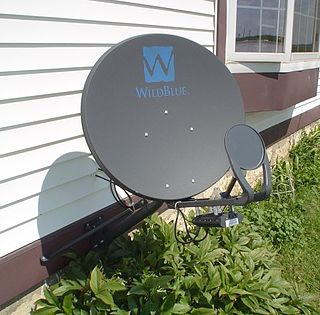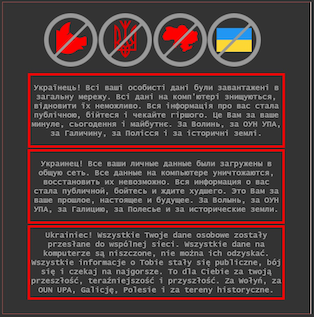Telecommunications in Ecuador include telephone, radio, television, and the Internet.
Telecommunications in Kenya include radio, television, fixed and mobile telephones, and the Internet.
Telecommunications in Mongolia face unique challenges. As the least densely populated country in the world, with a significant portion of the population living a nomadic lifestyle, it has been difficult for many traditional information and communication technology (ICT) companies to make headway into Mongolian society. With almost half the population clustered in the capital of Ulaanbaatar, most landline technologies are deployed there. Wireless technologies have had greater success in rural areas.
Telecommunications is one of the most modern, diverse and fast-growing sectors in the economy of Ukraine. Unlike the country's dominating export industries, telecommunications, as well as the related Internet sector, remain largely unaffected by the global economic crisis, ranking high in European and global rankings.

Satellite Internet access is Internet access provided through communication satellites; if it can sustain high speeds, it is termed satellite broadband. Modern consumer grade satellite Internet service is typically provided to individual users through geostationary satellites that can offer relatively high data speeds, with newer satellites using the Ku band to achieve downstream data speeds up to 506 Mbit/s. In addition, new satellite internet constellations are being developed in low-earth orbit to enable low-latency internet access from space.

Internet in Russia, or Russian Internet, and sometimes Runet, is the part of the Internet that is related to Russia. As of 2015, Internet access in Russia is available to businesses and home users in various forms, including dial-up, cable, DSL, FTTH, mobile, wireless and satellite.

The Internet in the United States grew out of the ARPANET, a network sponsored by the Advanced Research Projects Agency of the U.S. Department of Defense during the 1960s. The Internet in the United States of America in turn provided the foundation for the worldwide Internet of today.

VK, known as Mail.ru Group until 12 October 2021, is a Russian technology company. It started in 1998 as the parent company of Mail.ru, an e-mail service and went on to become a major corporate figure in the Russian-speaking segment of the Internet.

Internet usage in Ireland was reported at a 95% rate among individuals by 2022, higher than the European Union (EU) average of 89%. According to the European Commission's Digital Economy and Society Index (DESI) 2023 report, 70% of Irish adults had at least basic digital skills in 2021, above the EU average of 54%. Additionally, 77% demonstrated basic digital content creation skills, exceeding the EU average of 66%. Ireland's National Digital Strategy, along with the 10-year Adult Literacy for Life strategy, aims to enhance digital competencies across the workforce and society.
Internet in Greece reached an 82% usage rate among individuals in 2022, yet it slightly trails behind the European Union averages in digital skills among individuals aged 16-74, as highlighted in the European Commission's Digital Decade Country Report 2023. In an effort to bridge this gap and enhance digital proficiency across the nation, Greece implemented the "Works Again" law in April 2022. This law is designed to modernize the Public Employment Service, aligning it more closely with the demands of the labor market and vocational training needs. Additionally, Greece has launched a strategic initiative for Vocational Education and Training (VET) and lifelong learning. This initiative aims to revamp educational curricula to include digital and green skills.

The term "Internet in Poland" refers to various aspects related to the state of the Internet in the Republic of Poland. This encompasses issues such as Internet access, governance, freedom, and infrastructure, as well as social, economic, and political factors that contribute to the digital landscape in Poland.

Internet in the Philippines first became available on March 29, 1994, 10:18 a.m., with the Philippine Network Foundation (PHNet) connecting the country and its people to Sprint in the United States via a 64 kbit/s link. As of February 2023, there are 85.16 million internet users in the country, where internet penetration stood at 73.1% of the total population.

Internet in India began in 1986 and was initially available only to the educational and research community. General public access to the internet in India began on 15 August 1995. By 2023, India had more than 900 million Internet users. It is reported that in 2022 an average mobile Internet consumption in India was 19.5 GB per month and the mobile data usage per month rose from 4.5 exabytes in 2018 to 14.4 exabytes in 2022.
The Internet in Chile has its roots in experimental tests conducted in 1986 between the Universidad de Chile and the Universidad de Santiago de Chile, the two main public universities in the country. Its commercialization began in the mid-1990s, and it experienced widespread adoption in the second half of the 2000s. Before this, Chile had previously attempted the Cybersyn project in 1971, which aimed to establish an almost real-time economic information transfer system with the government, but it did not succeed.
Telecommunications in Angola include telephone, radio, television, and the Internet. The government controls all broadcast media with a nationwide reach.

NBN Co Limited, known as simply nbn, is a state-owned corporation of the Australian Government, tasked to design, build and operate Australia's National Broadband Network (NBN) as the nation's wholesale broadband provider. The corporation reports to two shareholder ministers: the Minister for Finance and the Minister for Communications.

Starlink is a satellite internet constellation operated by Starlink Services, LLC, a wholly owned subsidiary of American aerospace company SpaceX, providing coverage to over 100 countries and territories. It also aims to provide global mobile broadband.

Eutelsat OneWeb is a subsidiary of Eutelsat Group providing broadband satellite Internet services in low Earth orbit (LEO). The company is headquartered in London, and has offices in Virginia, US and a satellite manufacturing facility in Florida – Airbus OneWeb Satellites – that is a joint venture with Airbus Defence and Space.

During the prelude to the Russian invasion of Ukraine and the Russian invasion of Ukraine, multiple cyberattacks against Ukraine were recorded, as well as some attacks on Russia. The first major cyberattack took place on 14 January 2022, and took down more than a dozen of Ukraine's government websites. According to Ukrainian officials, around 70 government websites, including the Ministry of Foreign Affairs, the Cabinet of Ministers, and the National and Defense Council (NSDC), were attacked. Most of the sites were restored within hours of the attack. On 15 February, another cyberattack took down multiple government and bank services.

In February 2022, two days after Russia's full-scale invasion, Ukraine requested American aerospace company SpaceX to activate their Starlink satellite internet service in the country to replace internet and communication networks degraded or destroyed during the war. Starlink has since been used by Ukrainian civilians, government and military. The satellite service has served for humanitarian purposes, as well as defense and attacks on Russian positions.









